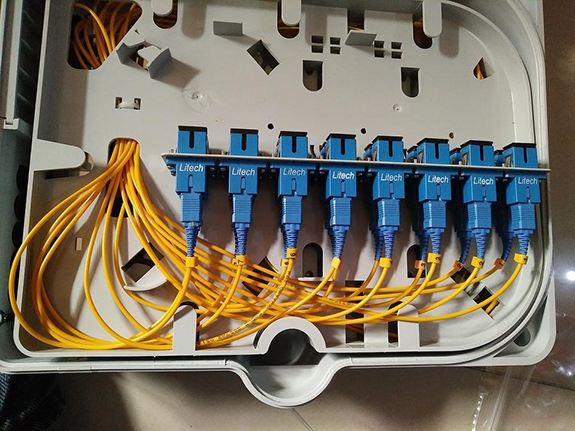
What Is a Passive Optical Network?
Passive optical networks (PONs) bring high broadband speeds and fiber to end users' doorsteps. IT pros should know what a PON is and how it can provide network solutions.

A wide area network (also known as WAN), is a large network of information that is not tied to a single location. WANs can facilitate communication, the sharing of information and much more between devices from around the world through a WAN provider.
WANs can be vital for international businesses, but they are also essential for everyday use, as the internet is considered the largest WAN in the world. Keep reading for more information on WANs, their use, how they differ from other networks and their overall purpose for businesses and people, alike.
As described above, wide area networks are a form of telecommunication networks that can connect devices from multiple locations and across the globe. WANs are the largest and most expansive forms of computer networks available to date.
These networks are often established by service providers that then lease their WAN to businesses, schools, governments or the public. These customers can use the network to relay and store data or communicate with other users, no matter their location, as long as they have access to the established WAN. Access can be granted via different links, such as virtual private networks (VPNs) or lines, wireless networks, cellular networks or internet access.
For international organizations, WANs allow them to carry out their essential daily functions without delay. Employees from anywhere can use a business’s WAN to share data, communicate with coworkers or simply stay connected to the greater data resource center for that organization. Certified network professionals help organizations maintain their internal wide area network, as well as other critical IT infrastructure.
There are many different forms of area networks, but one of the most common networks outside of WANs is the local area network, or LAN.
Whereas WANs can exist globally, without ties to a physical location through the use of a leased network provider, LANs exist within a limited area. LANs can be used to access a greater WAN (such as the internet), but only within the area where the LAN’s infrastructure can reach.
Two common examples of LANs are ethernet and wireless networks. Wireless LANs are also known as WLANs. Other forms of telecommunication networks include the following:
If WAN connections didn’t exist, organizations would be isolated to restricted areas or specific geographic regions. LANs would allow organizations to work within their building, but growth to outside areas — either different cities or even different countries — would not be possible because the associated infrastructure would be cost prohibitive for most organizations.
As organizations grow and become international, WANs allow them to communicate between branches, share information and stay connected. When employees travel for work, WANs allow them to access the information they need to do their job. WANs also help organizations share information with customers, as well as partner organizations, such as B2B clients or customers.
However, WANs also provide an essential service to the public. Students at universities might rely on WANs to access library databases or university research. And every day, people rely on WANs to communicate, bank, shop and more.
As data across the world continues to proliferate at breakneck speed, network providers of various sizes (from LAN to WAN) are beginning to see a strain on what their networks can support. This has resulted in new forms of data optimization to increase data collection, reduce bandwidths and consolidate servers, among other things.
As WANs are so expansive, modern organizations have been eager for a more optimized version of a WAN connection. Software-defined WANs (SD-WANs) is one solution organizations are beginning to turn to, as it can help alleviate serious traffic issues in the sharing and spreading of data information.
SD-WANs use smart software that can monitor the performance of different WAN connections and then appropriately allocate the data into the right connection for the type of traffic users need.
For example, an organization may have many different forms of WAN telecommunications — from emails and conference calls to data sharing and dedicated server networks — and SD-WANs typically help alleviate the strain from all these connections by choosing the appropriate channel to funnel the data through.
Data demands will continue to grow exponentially over the coming decades, so more advanced forms of WAN connections may continue to be developed. Even now, NASA is working on creating an interplanetary internet for future exploration, and it is currently using a disruptive tolerance network (DTN) for the International Space Station. The biggest concern will be addressing the speed of data transfer, as the greater the distance between two servers, the longer it will take for data to get from point A to point B.
WANs have become an essential part of human communication and business relations, and as the world continues to grow, WANs may change and develop new forms of technology in time, as well.
CompTIA Network+ covers computer networking topics including wide area networks. Download the exam objectivesto see all the topics covered by this IT certification.
Read more about Computer Networks.
Tags : Computer Networks